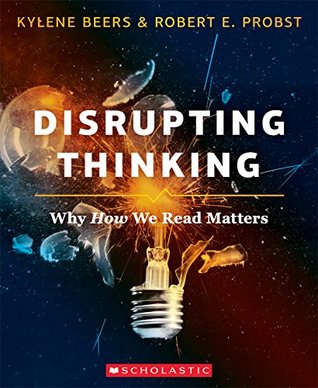More on this book
Community
Kindle Notes & Highlights
Disruptions start with a thought that something needs to be better. And with two questions: What needs to change? What assumptions make that change hard?
If this reader, this student who must be able to handle the toughest of texts, has a chance to emerge in our classrooms, it will be because of teachers who, at the end of a long day, still pause to pick up a professional book and contemplate new ideas.
Disrupting Thinking is, at its heart, an exploration of how we help students become the reader who does so much more than decode, recall, or choose the correct answer from a multiple-choice list. This reader is responsive, aware of her feelings and thoughts as the text brings them forth. She is responsible, reflecting honestly about what the writer has offered and how she has reacted, willing either to hold fast or to change, as reason and evidence dictate. And she is compassionate, willing to imagine, possibly to feel, always to think about what others—author, characters, and other
...more
Fake readers pretend to read the text, feign engagement, and sometimes extract words from the text to answer questions with little thought.
We’ve wondered if the problem of aliteracy could be solved by giving kids books they wanted to read and making sure they had more time to read.
How often do you ask your students, “How did this reading change who you are?” If not often, explore with colleagues why that is. Do you believe that reading can change who you are? If you do, then why not discuss that with students?


